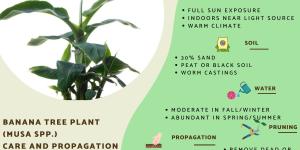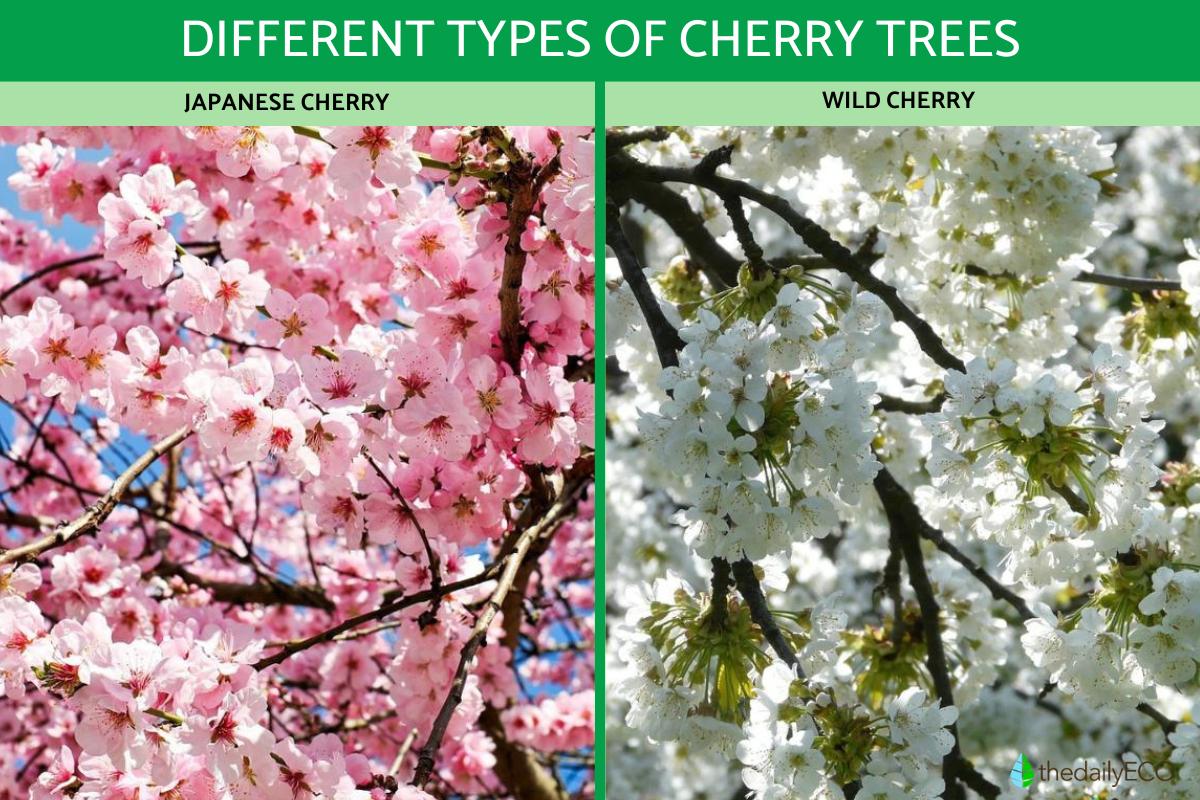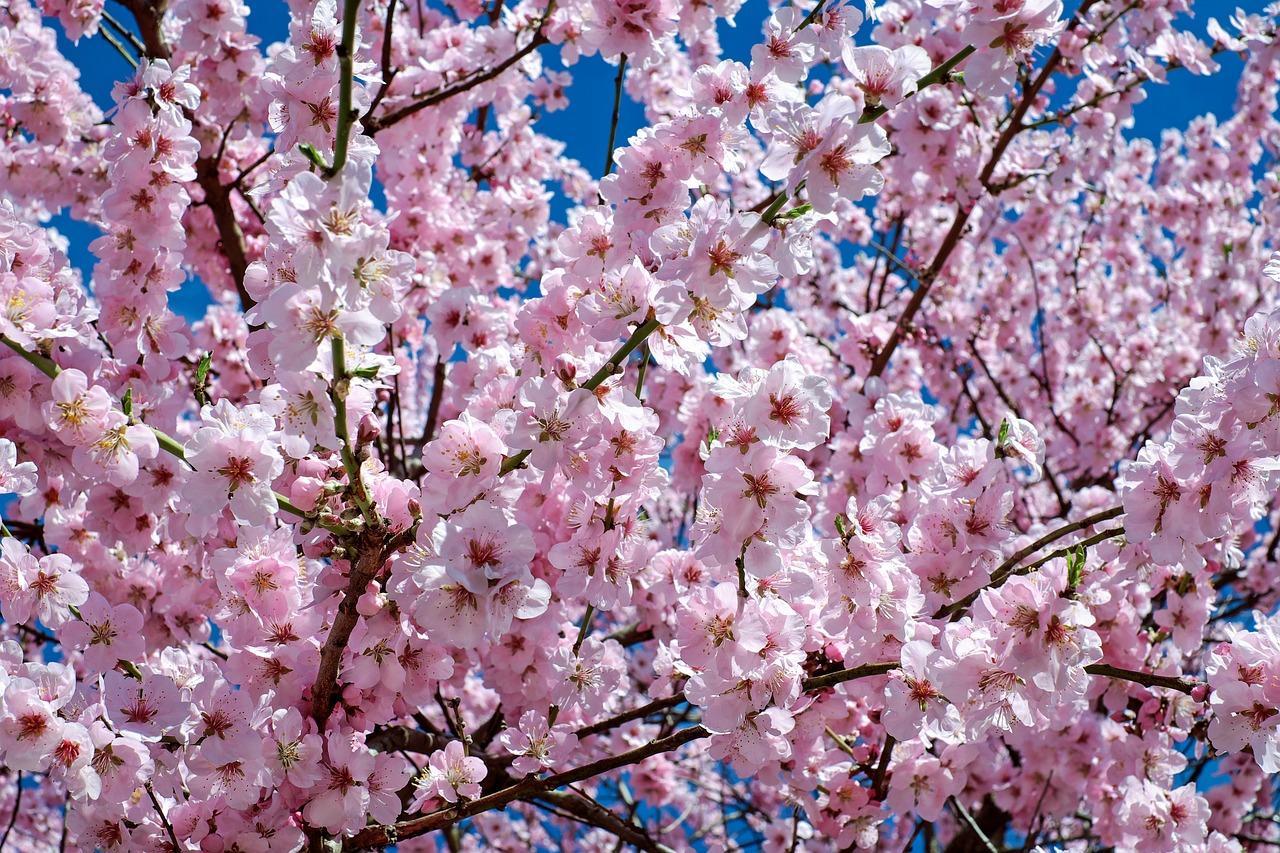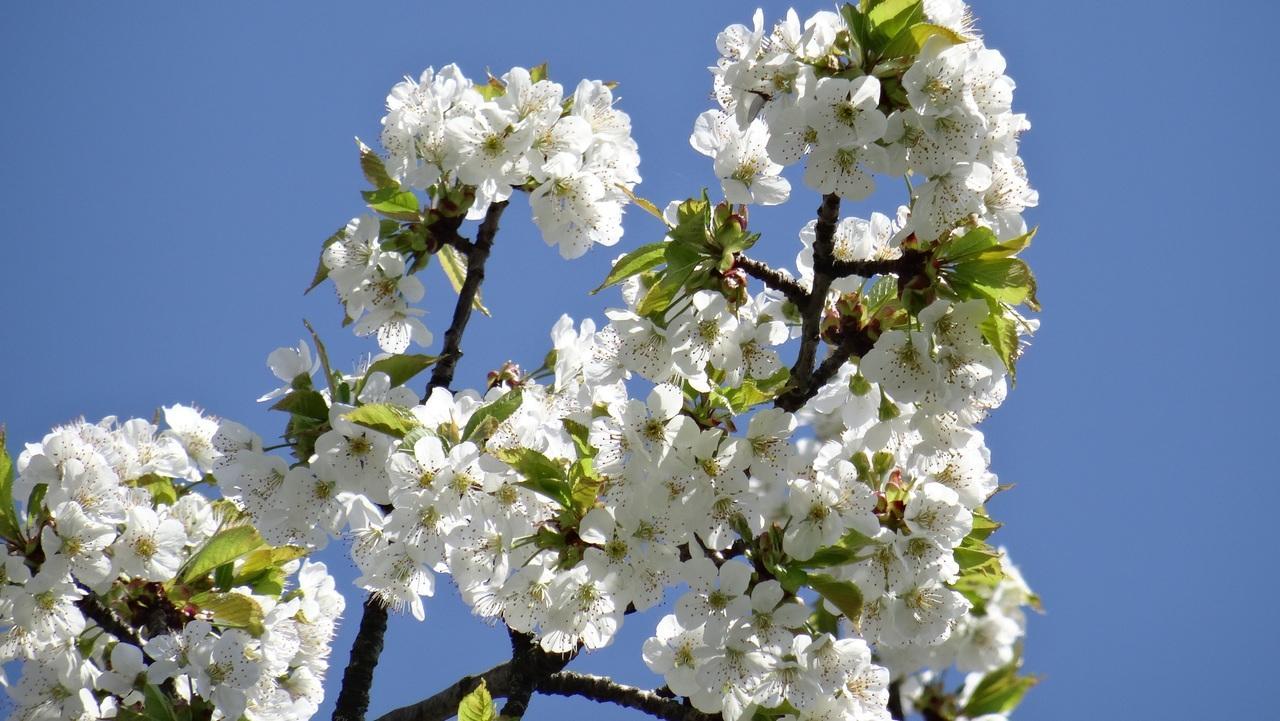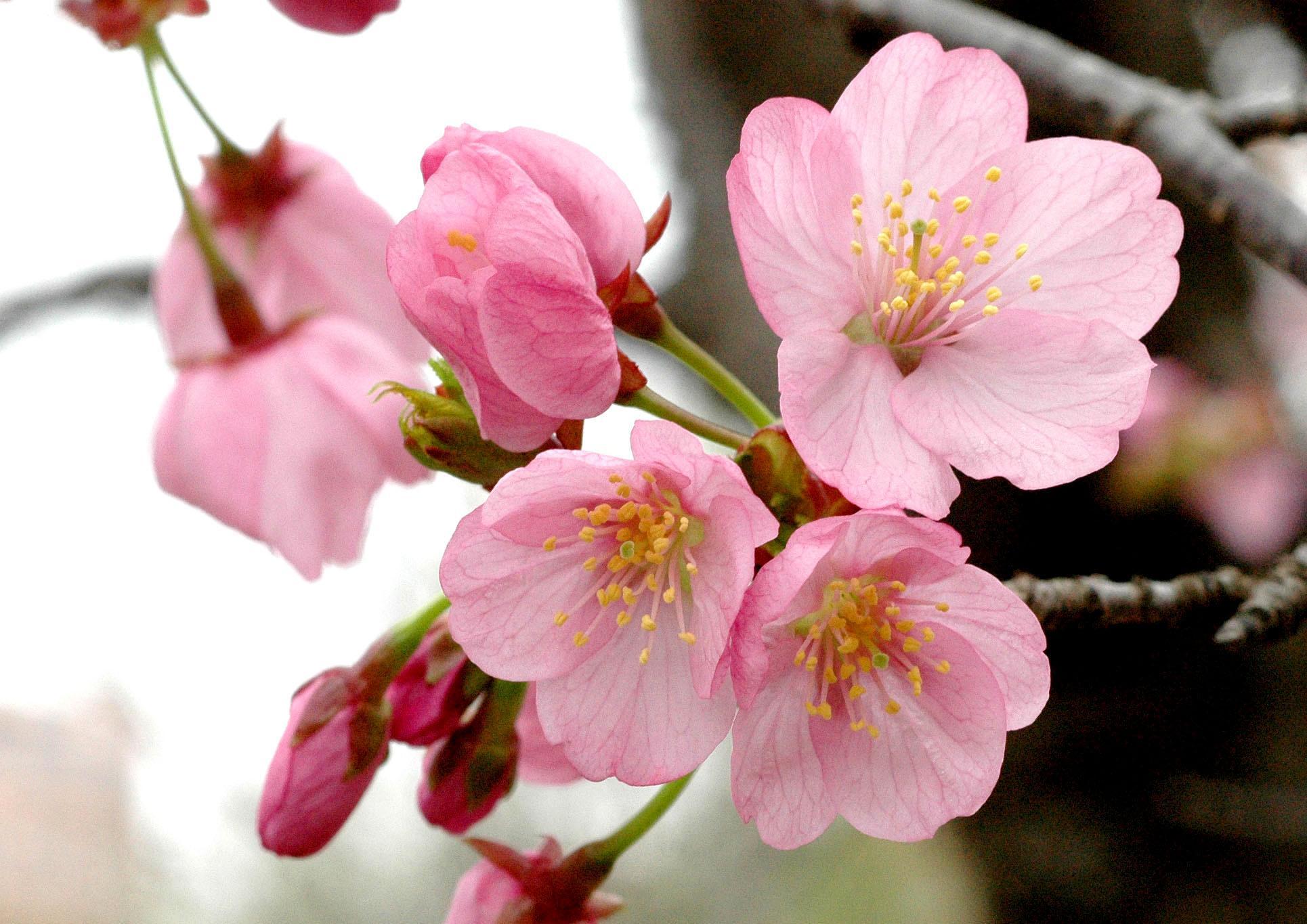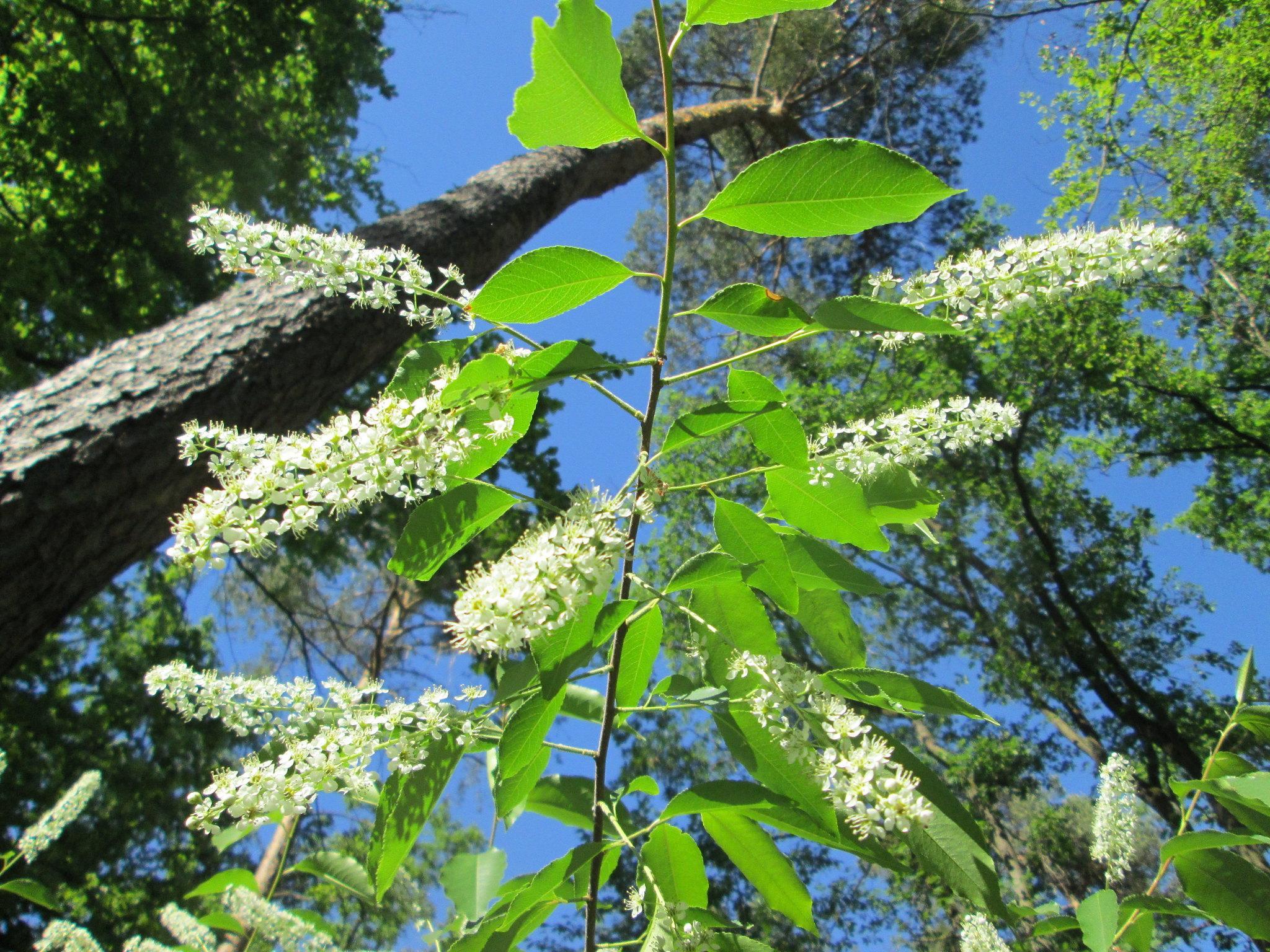Types of Cherry Trees - Cherry Tree Varieties


Some of the most common cherry tree varieties include the Japanese cherry (Prunus serrulata), wild cherry (Prunus avium), Sargent's cherry (Prunus sargentii) and wild black cherry (Prunus serotina). All types of cherry tree bloom early in the spring, usually in the months of April and May. To do so, they require full sun exposure, loose substrate, moderate watering, temperatures above -10 ºC and only a little pruning.
Cherry trees are those that belong to the genus Prunus. Despite being native to both western and eastern regions of the globe, they are particularly associated with Japan. When they bloom in spring, we can see cherry blossoms covering the streets. They are depicted in Japanese art and are particularly associated with samurai culture. At thedailyECO, we discover the different types of cherry trees.
Characteristics of cherry trees
Cherry trees are characterized by having soft colored flowers known as cherry blossoms. They can be white or pink, with varying gradations of both. They belong to the genus Prunus, a fascinating genus of fruit-bearing trees which include peach trees, almond trees, apricot trees and more. Despite the great variety of fruit, they all flower with similar blossoms to the peach tree. This makes them difficult to determine by flowers alone.
Taxonomically, all cherry trees belong to the subgenus Cerasus, with only cherry trees being grouped here. Among the characteristics of this Cerasus subgenus we can find:
- Fruits: they have small, rounded fruits that are light red to dark purple in color due to the presence of anthocyanin. They also have a dimple at the base of the fruit.
- Flowers: the flowers of trees in this subgenus are arranged in corymbs, i.e. clusters of stems arranged in such a way that all ends are level.
When do cherry trees blossom?
These trees are particular in that they flower early and do so before many spring plants. This is because they need to go through a winter cold season before they can bloom. This cold season lasts for 3 months, after which time the flowers can develop.
The flowering of the cherry tree signals that spring is approaching, even when there are still no signs in other plants. This cherry blossom appearance is celebrated in the Hanami festival where trees are viewed in the open air. Cherry blossoms can be seen for the month of April and May. The flowering lasts for around 10 to 20 days.
Now you know when cherry trees blossom, you may wonder how long does a cherry tree take to bear fruit. The cherries will ripen in late spring and early summer. This only occurs once a year and there is a short window of a few days when the fruit can be picked. Regarding the age of the tree to bear fruit, a minimum of 3 years is required for this to occur.
Now we look at some of the most common types of cherry trees in the sections below.
Japanese cherry (Prunus serrulata)
As you can see in the photo below, this is one of the cherry tree varieties most noted for its ornamental value. It is grown more for its flowers than for the fruit, which are small and bitter. The tree is approximately 6 meters high and its crown is dense. There are many cultivars of this cherry tree type, including some with double flowers. Said flowers can be pink or white. It is one of the cherry trees that take the longest to bloom, sometimes needing 10 days longer than other species.
These cherry trees can not only be enjoyed in Japan. They were gifted in 1912 by the then Japanese mayor to the United States and Mexico, but it was the cherry trees in Washington that survived best thanks to its mild climate. Most of those observed are P. serrulata var. ‘Kanzan’. A festival of Japanese culture is held under them when they are in bloom.
While we are focusing here on the different types of cherry trees, you may be interested in learning more about the different types of trees in a more general context.

Wild cherry (Prunus avium)
Also known as sweet cherry, bird cherry or gean, this type of cherry tree is native to Europe. It can grow up to 98' (30 m) in height and has a narrow crown. The flowers are white and the fruit are dark. A large part of commercial trees used for growing their fruit are created from this species. Some cherry fruits from these trees are so unique, they have been given special status. This is the case with cherry trees from the Jerte valley in Spain which have denomination of origin status to ensure they meet certain standards of quality.
If you want to grow a cherry tree like the one in the photo, you can use the link below:

Sargent's cherry (Prunus sargentii)
Also known as the North Japanese hill cherry. The trunk grows straight up and usually ranges from around 16-32' (10-5 m) in height. It is one of the types of cherry trees most highly valued by expert gardeners. It produces pink flowers around 1" (3 cm) in diameter and last longer most than other cherry species. New leaves are reddish in color, but turn green in summer and bronze in autumn. The fruits appear yellow, but turn red as they mature.

Wild black cherry (Prunus serotina)
This is one of the types of cherry trees which is native to North America. It is not widely used for gardening because the abundant fruits produce many new plants. For this reason, it is often very abundant in its natural habitat. It is a cherry tree which is of medium height. You can tell immature specimens from older tress because the bark is much different. As its name suggests, the cherry fruits of this tree are very dark.

How to care for cherry trees
Cherry trees are relatively easy to care for, but they have some specific requirements needed to ensure they grow well. These care needs for cherry trees include:
- Light: needs to be in direct sunlight.
- Temperature: the minimum temperature should be -15 ºC/5 ºF, but not for very long periods.
- Soil: they do not demand a very special soil, although it should not be clayey. It must be loose so that the long roots can grow properly.
- Irrigation: cherry trees have moderate irrigation needs, with a frequency of 1 watering per week. It can withstand occasional droughts.
- Pruning: they do not require frequent pruning. This can be done every 5 to 10 years to give it shape.
As we have stated, cherry trees have become an important facet of Japanese culture. You can learn more about Japanese horticulture with our articles on what is akadama soil and kiryuzuna soil for bonsai?
If you want to read similar articles to Types of Cherry Trees - Cherry Tree Varieties, we recommend you visit our Plant care and cultivation category.
Dirr, M. (2016). Dirr's Encyclopedia of Trees and Shrubs. United Kingdom: Hachette UK.


